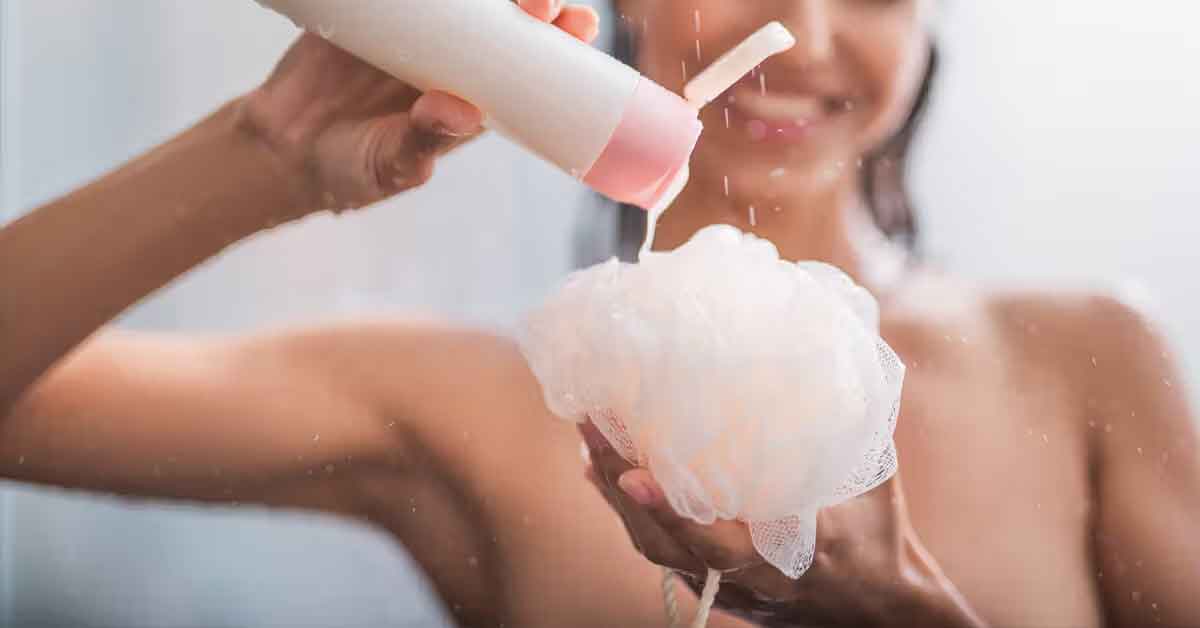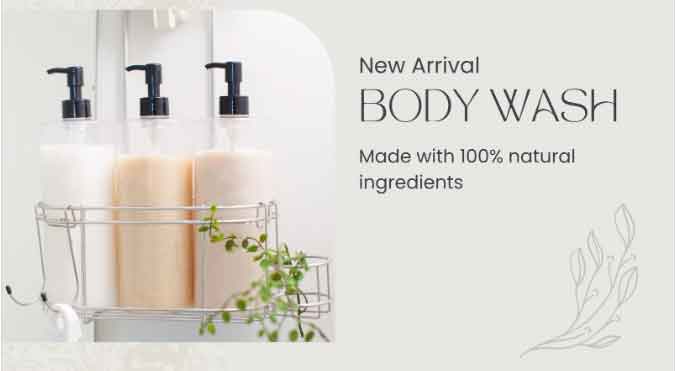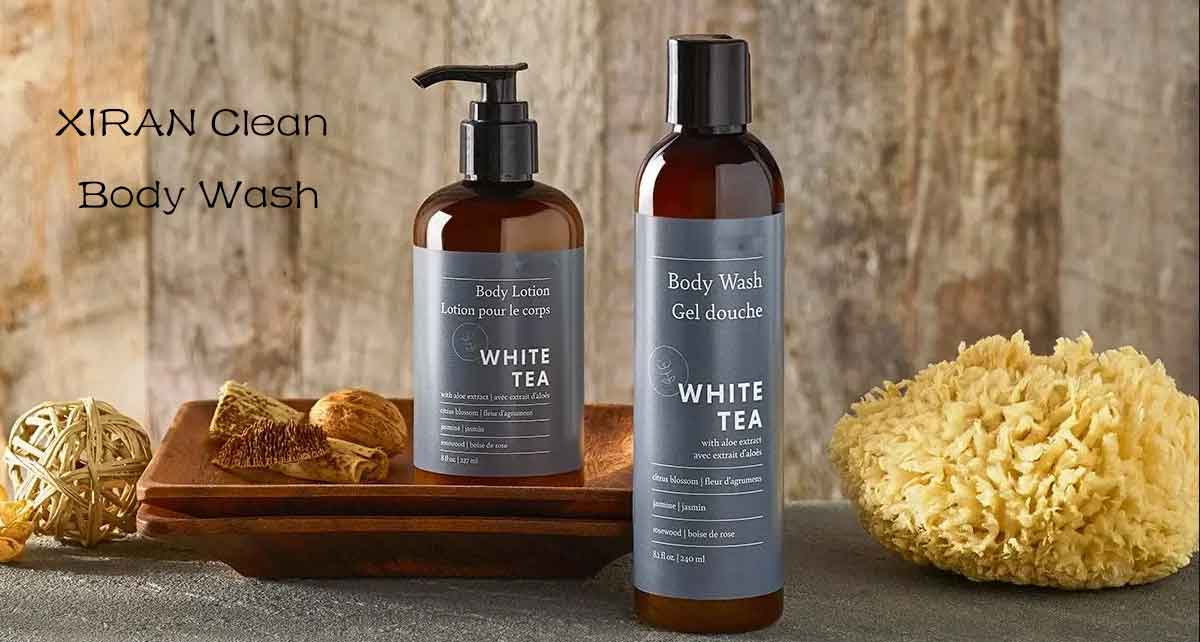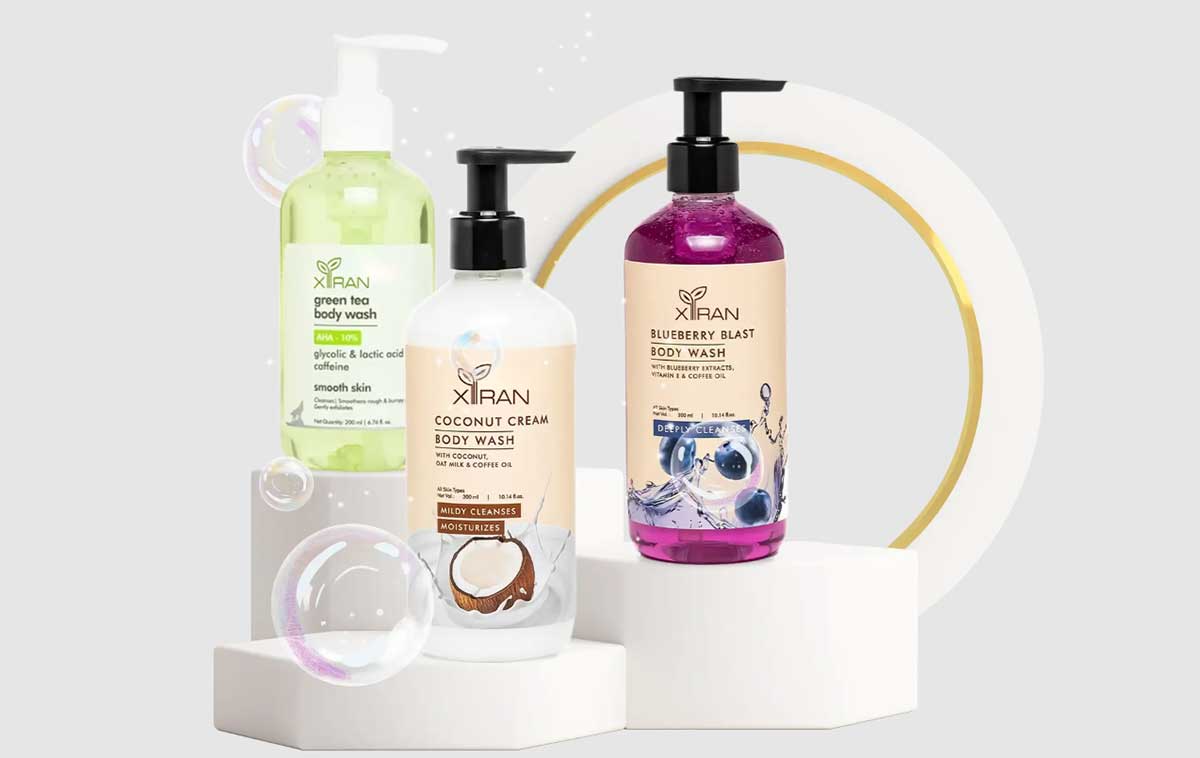
In the development of body wash products, understanding the functional properties and application scenarios of each ingredient is a prerequisite for developing high-performance, highly acceptable formulations.
As a professional body wash manufacturer, we understand the decisive impact of ingredient selection on product texture, skin feel, and market positioning.

The reason for knowing the ingredients in our shower gels is that behind every drop of the formula, there is a balance between skin feel, safety, and efficacy. Ingredients not only determine cleansing power and moisture retention, but also skin comfort, experience, and brand reputation.
Choosing the right ingredients is the starting point for creating a truly gentle, effective, and market-recognized body wash.
A mature body wash formulation consists of the following five modules: a basic solvent system (usually water), a surfactant system (cleansing + foaming), moisturizing and softening factors, functional additives (soothing, antibacterial, brightening, etc.), and stabilizers (preservatives, pH-adjusting agents, thickeners, etc.).
The following table provides a systematic overview of the key ingredients commonly found in body wash formulations and their functions. An in-depth understanding of the individual properties and synergistic effects of these ingredients can help product developers to accurately build efficient and effective shower gels.
This helps product developers to accurately build effective and innovative body wash formulations that meet consumer skin care needs and ensure compliance with various regulatory requirements.
| Ingredients | Common Options | Efficacy |
| Water | Solvent, Carrier | Deionized water, purified water, distilled water |
| Primary Surfactants | Cleaning, Foaming | Sodium Lauryl Sulfate (SLS), Sodium Laureth Sulfate (SLES) |
| Auxiliary Surface Activity | Mild synergy, foam stabilization | Cocamidopropyl betaine, Coco glucoside |
| Moisturizers | Moisturizing, Improving Skin Feel | Glycerin, Propylene Glycol, Butylene Glycol, Sodium Hyaluronate |
| Emollient | Enhances afterfeel | Vegetable Oil (Olive Oil, Sweet Almond Oil), Squalane |
| Anti-Allergy Soothing Agent | Soothes skin and reduces irritation | Allantoin, Centella Asiatica Extract, Oat Extract |
| Thickeners | Adjust texture, improve stability | Carbomer, Xanthan Gum, Sodium Chloride |
| PH Modifiers | Stabilizes the formulation environment | Citric acid, sodium hydroxide, lactic acid |
| Preservatives | Prevents microbial contamination | Phenoxyethanol, potassium sorbate, hexylglycerin |
| Flavors | Providing the scent experience | Synthetic flavors, natural essential oils (e.g. lavender, citrus) |
| Pigmentation (optional) | Enhancement of visual perception | CI 19140 (lemon yellow), natural plant pigments (e.g. chlorophyll) |
| Functional additions | Positioning differentiated selling points | Tea Tree Oil (anti-bacterial), Niacinamide (skin brightening), Bamboo Charcoal Powder (purifying) |

Of course, with the booming personal care market more and more families are focusing on using natural and additive-free care products, so many families are prioritizing natural body washes!
Natural ingredient body washes are based on plant extracts, natural oils and fats, mild epimediums and additive-free formulas that emphasize gentleness, safety and eco-friendliness, making them popular with sensitive skin and green consumers. Here are a few key ingredients commonly used in natural body washes
| Ingredient Category | Common Natural Ingredients | Efficacy |
| Natural Detergents (surfactants) | Sodium Cocoyl Glutamate (coconut source), Potassium Cocoyl Glycinate, Sodium Lauroyl Glutamate | Gentle cleansing, low irritation, suitable for sensitive skin |
| Vegetable oils | Coconut Oil, Olive Oil, Sweet Almond Oil, Jojoba Oil | Moisturizes skin, strengthens barrier, prevents dryness |
| Plant Extracts | Aloe Vera Extract, Centella Asiatica Extract, Chamomile, Green Tea, Lavender | Soothing, anti-oxidant, anti-inflammatory, calming skin |
| Natural Moisturizers | Glycerin, honey, plant hyaluronic acid (e.g. snow ear extract) | Deeply moisturizes and enhances skin feel |
| Natural Fragrance | Essential oils (lavender, citrus, ylang ylang, tea tree) | Natural aroma, relaxing, some with antibacterial effect |
| Natural Colors | Saffron, green algae, carotene | Provides natural color (not essential) |
Compared to traditional body washes natural body wash is known for being gentle, safe and eco-friendly for sensitive, dry skin and even babies.
Its ingredients are mainly plant-sourced cleansing ingredients and plant extracts (e.g. sodium cocoyl glutamate, chamomile extract, etc.), avoiding irritants such as sulfates, synthetic fragrances and preservatives, making it friendlier to the skin.
Meanwhile, the natural body wash formula is easily degradable and the packaging is environmentally friendly, which is in line with the trend of green consumption. Natural essential oils provide a natural aroma that is both relaxing and skincare-friendly, making them an ideal choice for those seeking healthy skincare.

The cleansing power of body wash mainly comes from surfactant ingredients, which can effectively remove sweat, oil and dirt from the skin, such as Cocamidopropyl Betaine , Sodium Lauroyl Glutamate, etc.
Not only do these ingredients have good cleansing power, but they can also keep skin These ingredients not only have good cleansing power, but also keep the skin moisturized and soft. The specific cleansing ingredients in shower gel are as follows:
| Cleaning Ingredient Name | Functional Description | Characteristics and Usage |
| Sodium Lauryl Sulfate (SLS) | Strong cleansing, foaming | Strong cleansing power, rich foam, high irritation, commonly used in ordinary body wash |
| Sodium Laureth Sulfate (SLES) | Mild Cleansing, Foaming | Much milder than SLS, rich foam, often used in combination with other surface actives |
| Cocamidopropyl Betaine | Cleansing aid, foam stabilizer | Amphoteric, mild, good foaming, commonly used in infants or sensitive skin formulations |
| Sodium Cocoyl Glutamate | Amino Acid Surfactant for Gentle Cleansing | Naturally sourced, low irritation, commonly used in premium skin care grade body washes |
| Sodium Lauroyl Glutamate | Mild Amino Acid Surfactant | Moderate cleansing power, gentle and non-abrasive, suitable for sensitive skin |
| Alkyl glycosides (e.g. decyl glucoside) | Mild cleansing and lathering aid | Low irritation, biodegradable, commonly used in green and natural shower gels |
| Cocamide MEA, DEA | Thickening, foaming aid | Improve foam structure, some countries restrict the use of DEA-type ingredients |
Compared with the traditional strong cleansing power of sulfates, modern mild cleaning ingredients are more suitable for daily use, especially for sensitive or dry skin people, choose the right cleaning ingredients, is to create a comfortable, safe, high-quality body wash an important step!
We recommend that the following ingredients be banned when manufacturing private label body washes:
Although these ingredients have a cleansing effect, long-term use of care products with these ingredients can lead to dry skin, allergic reactions, endocrine disruption and even more serious health problems.
Consumers in Europe and the United States, and even elsewhere, are increasingly concerned about ingredient safety, and the European Union's REACH regulation and the U.S. California's Proposition 65 (Prop 65) impose strict restrictions on these high-risk substances. If you use such ingredients in your care products, the products will face the risk of being taken off the shelves, loss of brand trust, and even legal action.
Therefore, we strongly recommend the use of gentler, natural ingredients, plant-based or biodegradable ingredients to ensure product safety and market compliance for future long-term brand development.

Once you have determined the product positioning, the next step is to select raw materials based on the three dimensions of target skin type, user preference, and regulatory compliance:
Dry skin: It is recommended to add highly moisturizing ingredients such as sodium hyaluronate and glycerin, and use mild surfactants (such as APG).
Oily skin: It can be paired with oil-controlling plant extracts (tea tree, rosemary), and the surfactant system can moderately enhance the cleansing power.
Sensitive skin: The formula should exclude SLS, alcohol, and artificial colors, and betaine and amino acid surfactants are suitable.
The EU bans more than 1,300 ingredients
The US FDA has restrictions on antimicrobial agents and preservatives
The Middle East market must comply with Halal certification;
Organic-certified products must use Ecocert and COSMOS-certified raw materials.
In recent years, labels such as "sulfate-free", "zero preservatives", and "fragrance-free" have been favored by the market. It is recommended to reserve technical solutions for such formulas.
"Functional shower gels" such as antibacterial, anti-mite, and vitamin E shower gels are gradually emerging and can be used as a differentiated development direction.
Foam regulation, consistency control, and stability testing are key technical aspects that should not be overlooked in the development of body washes, whether natural or traditional.
The consistency of the formulation should be controlled by adding thickening agents such as sodium chloride (NaCl) and other electrolytes, but the dosage should be adjusted step by step to avoid phase separation problems caused by over-addition.
In addition, stability testing is a key step to ensure the shelf-life quality of the product. It is recommended to carry out hot and cold cycling experiments (-5°C to 45°C) as well as accelerated aging tests for a period of three months to comprehensively assess the physical stability of the formulation under extreme temperature and humidity conditions, so as to safeguard the reliability of the final product and its competitiveness in the market.
At Xiran, as a professional skin care manufacturer, we are always guided by scientific, safety, and market-oriented thinking. Whether you are creating a basic bulk product or developing a specialty efficacy formula, a thorough understanding of the structure and function of each body wash ingredient is the first step in getting your product to market.
If you are looking for an OEM/ODM body wash solution or need assistance in developing a proprietary formulation, please feel free to contact our R&D team. We can provide one-stop support from raw material recommendations, sample trials, and efficacy suggestions to compliant packaging.

